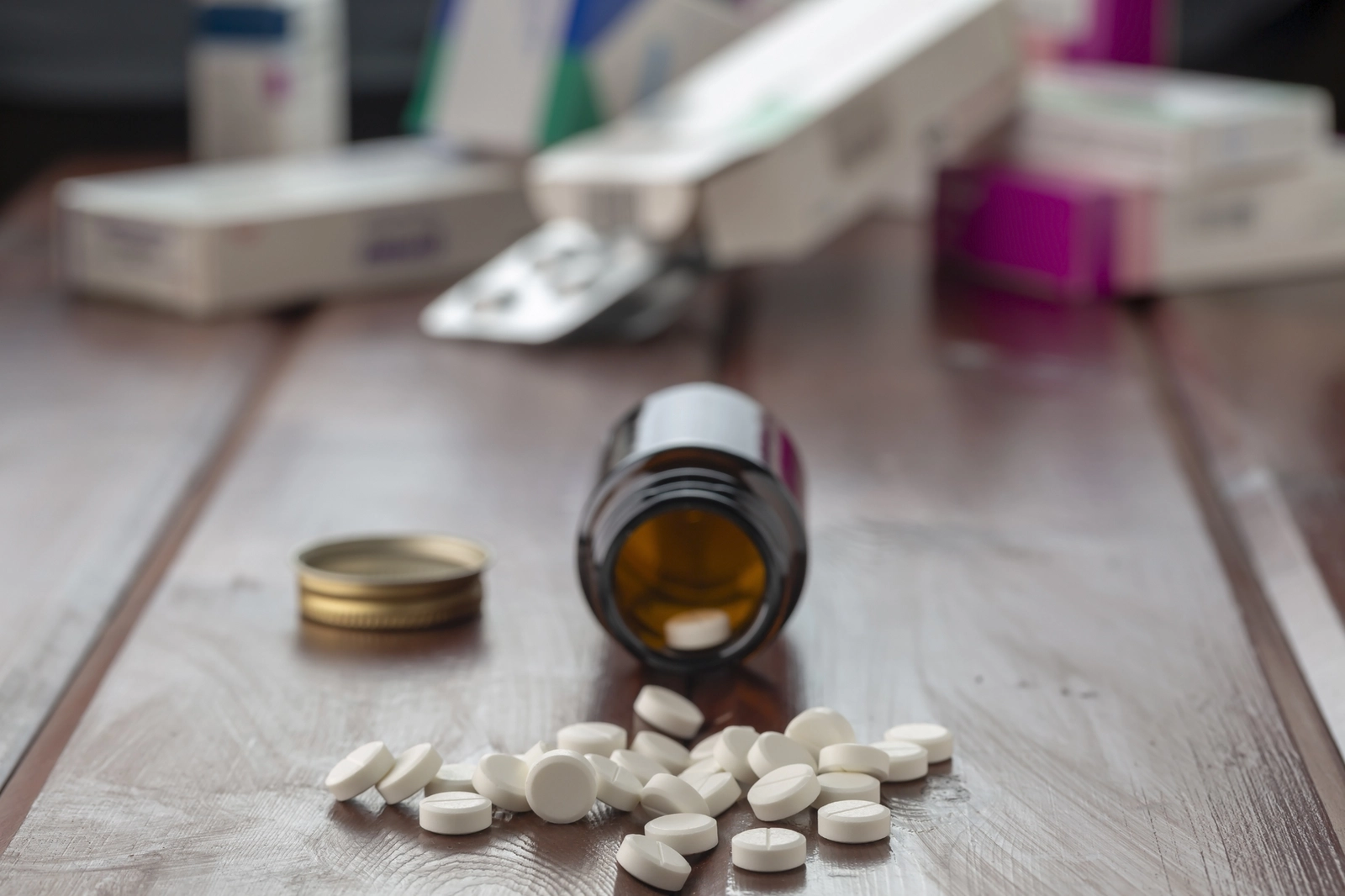Carisoprodol, commonly sold under the brand name Soma, is a prescription muscle relaxant used to treat acute musculoskeletal pain. Like all medications, carisoprodol can cause various reactions that range from mild and temporary to more serious conditions requiring medical attention. Awareness of these potential effects helps patients make informed decisions about their treatment and recognize when to contact their healthcare provider.
Key Points
- Carisoprodol is a prescription muscle relaxant that blocks pain signals between nerves and the brain. It is primarily used for short-term relief of musculoskeletal pain.
- Common side effects include drowsiness, dizziness, headaches, and nausea, particularly when starting the medication.
- As a Schedule IV controlled substance, carisoprodol carries risks of abuse, especially when taken in high doses or combined with other substances.
- Signs of overdose include extreme drowsiness, breathing difficulties, seizures, and loss of coordination, requiring immediate medical attention.
- Various treatment options are available for those struggling with carisoprodol use, including medical supervision, alternative pain treatments, and support groups.
What is Carisoprodol?
Carisoprodol is a prescription muscle relaxant that blocks pain signals between the nerves and the brain.[1] First approved by the FDA in 1959, it’s primarily prescribed for short-term relief of acute musculoskeletal pain, often alongside rest and physical therapy.[2] The medication is typically taken three times daily plus once at bedtime, with treatment usually lasting no more than two to three weeks.
As a Schedule IV controlled substance, carisoprodol carries some risk of dependence and abuse.[3] This classification was implemented in 2012 due to growing concerns about its misuse potential. The drug’s muscle-relaxing and mild sedative effects come from how it enhances the activity of GABA, a neurotransmitter in the brain that helps calm the central nervous system.
The medication’s effects usually begin within 30 minutes of a dose and can last for four to six hours.[4] While it’s effective for many patients, doctors typically prescribe it as part of a comprehensive treatment plan rather than as a standalone solution for muscle pain and spasms.
What Are the Potential Side Effects of Using Carisoprodol?

The potential side effects of carisoprodol can range from common and mild to rare and more serious. Most side effects are more likely to occur when starting the medication or when taking higher doses.
Drowsiness and dizziness are the most frequently reported effects, affecting many patients during treatment.[5] These symptoms can significantly impact daily activities like driving or operating machinery. Headache and nausea commonly occur as well, particularly during the first few days of treatment as the body adjusts to the medication. Many patients experience coordination problems and a feeling of physical and mental impairment, similar to feeling intoxicated. Rapid heart rate, depression, and irritability have also been reported.
Additionally, carisoprodol can cause more severe side effects:[6]
- Allergic reactions can occur, ranging from mild skin rashes to severe reactions requiring immediate medical attention.
- Some patients may experience seizures, particularly those with a history of seizure disorders.
- Respiratory depression is a rare but dangerous side effect, especially when carisoprodol is combined with other central nervous system depressants.
- Serotonin syndrome, though uncommon, can develop when carisoprodol is taken with certain other medications that affect serotonin levels.
Can Carisoprodol Be Abused?
Yes, carisoprodol has significant potential for abuse, which is why it’s classified as a Schedule IV controlled substance under federal law.
Risk Factors for Abuse
Carisoprodol creates a relaxing, sedative effect that some people find pleasurable. This effect becomes particularly dangerous when the medication is:
- Taken in higher doses than prescribed
- Combined with alcohol or other central nervous system depressants
- Used for longer periods than recommended
- Taken without a prescription
Signs of Abuse and Addiction
People abusing carisoprodol may show several warning signs, including taking more pills than prescribed, seeking prescriptions from multiple doctors, claiming to lose prescriptions frequently, or experiencing strong cravings for the medication. They might also continue using despite negative consequences to their health, work, or relationships.
Physical and Psychological Effects of Abuse
Long-term abuse of carisoprodol can lead to severe health consequences:
- Physical dependence and withdrawal symptoms
- Impaired cognitive function
- Increased risk of overdose
- Liver and kidney damage
- Mental health issues, including anxiety and depression
- Memory problems
- Severe sedation and confusion
What Are the Signs of Overdose?
An overdose of carisoprodol is a serious medical emergency that requires immediate attention.[7] Key signs include:[8]
- Extreme drowsiness progressing to a stupor or coma
- Severe vision problems or blurred vision
- Difficulty breathing or very shallow breathing
- Loss of coordination and muscle control
- Seizures
- Dangerously low blood pressure
- Rapid eye movements
- Confusion or disorientation
- Cold, clammy skin
- Heart problems, including abnormal rhythms
What To Do in Case of an Emergency
Being prepared for a medical emergency related to carisoprodol use could potentially save a life. The risk of overdose or severe adverse reactions increases dramatically when carisoprodol is combined with other substances, particularly alcohol, opioids, benzodiazepines, other muscle relaxants, or sleep medications. These combinations can lead to dangerous levels of central nervous system depression.[9]
If you suspect someone is experiencing a severe reaction or overdose, call 911 right away. While waiting for help to arrive, try to keep the person awake and alert if possible. If they are unconscious, turn them onto their side to prevent choking. Gather any medication bottles or information about what they’ve taken, as this will be vital information for emergency responders. Most importantly, stay with the person until medical help arrives.
Once at the hospital, medical professionals will provide supportive care, typically closely monitoring vital signs and respiratory support if needed. They may also administer activated charcoal to help remove the drug from the system. The treatment approach may need to be adjusted if other substances are involved, as combinations of drugs can complicate the recovery process.
How Can Someone Get Help?
If you or someone you know is struggling with carisoprodol use (whether prescribed or recreational), various treatment options and support systems are available. The journey to recovery often requires professional help, especially given the medication’s status as a controlled substance and its potential to cause withdrawal symptoms.
Healthcare providers can develop a personalized treatment plan that may include gradually tapering off carisoprodol while exploring alternative approaches for muscle pain and spasms. These alternatives might include other prescription medications, physical therapy, or other pain relief methods that don’t carry the same risks of dependence.
For those dealing with substance use issues, treatment typically involves several components:
- Medical supervision to safely manage withdrawal symptoms
- Alternative treatments for underlying muscle pain or injuries
- Counseling to address behavioral patterns and develop coping strategies
- Support groups that understand the unique challenges of prescription drug dependence
- Regular monitoring by healthcare professionals to prevent relapse
It’s essential to be honest with your healthcare provider about any other medications, including over-the-counter drugs, supplements, or substances like alcohol, opioids, or benzodiazepines, as these can complicate treatment. Medical professionals may need to address multiple aspects of health, including any underlying medical conditions, blood pressure issues, or liver disease that could affect treatment options.




